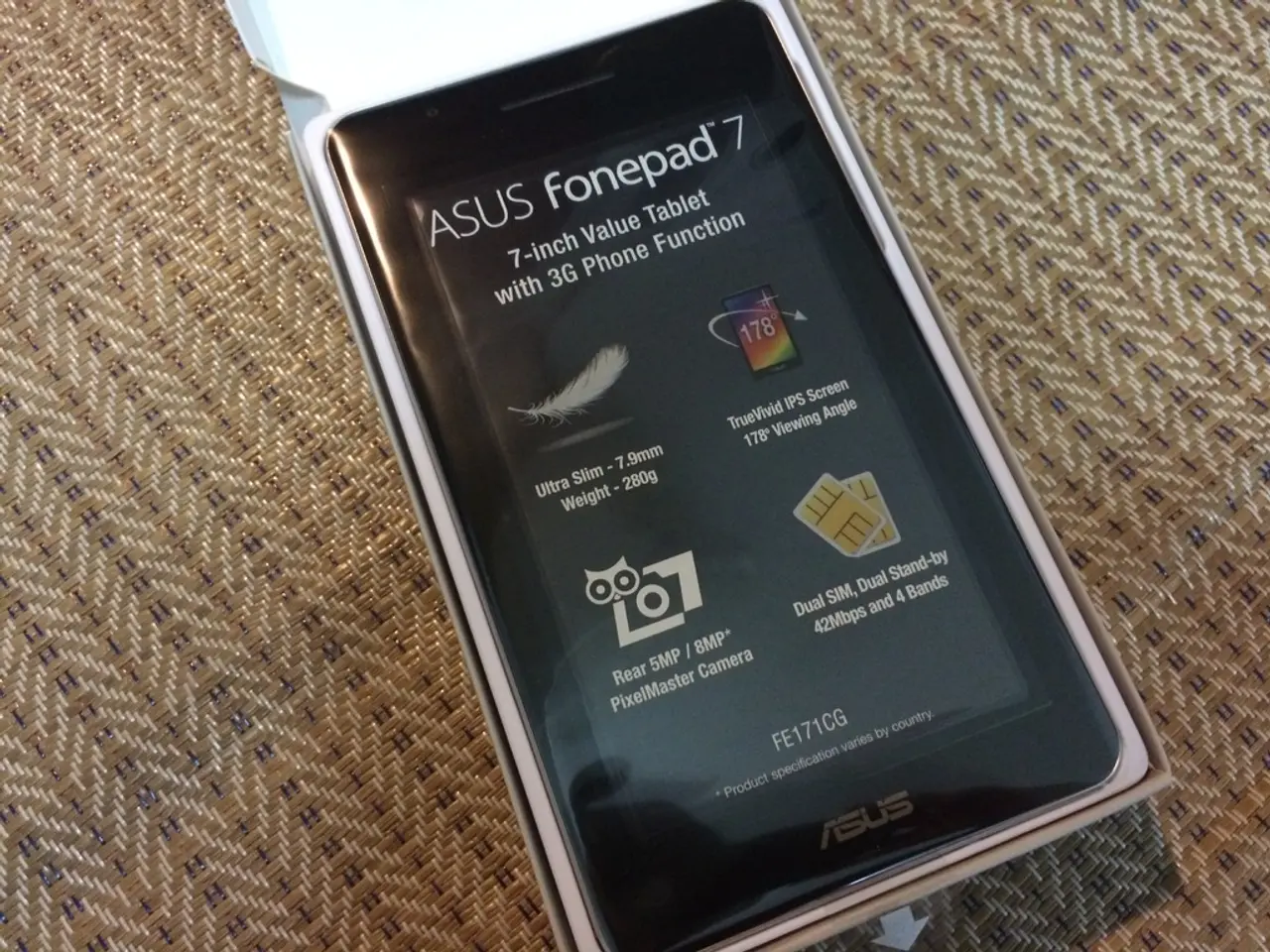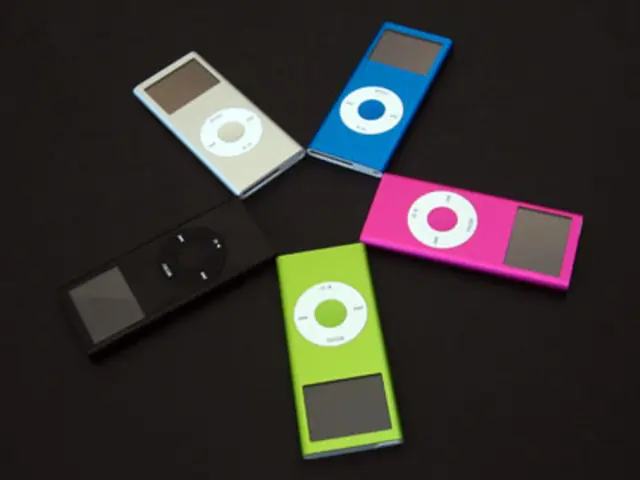Endure the durability trial on the 'iPhone Ultra Mini'
In a world where smartphones are becoming increasingly larger, the idea of a compact device like the "iPhone Ultra Mini" has sparked intrigue among consumers. Tech YouTuber Zack Nelson, known for his durability tests and in-depth reviews, recently presented a mock "iPhone Ultra Mini" in a video, raising questions about whether users would be interested in such a device. With a screen size of just 3.8 inches and a price tag of $59, the device is reminiscent of the latest iPhones but is actually an Android phone designed to resemble them[1].
Nelson's video, which features his signature rigorous tests, suggests that the iPhone Ultra Mini is a durable device. Despite its small size, it boasts a real glass display, a SIM and SD card tray, and only Wi-Fi and 3G connectivity. However, it should be noted that the iPhone Ultra Mini is not a flagship-level smartphone like the discontinued 5.4-inch iPhone mini. It lacks three cameras, and its design features plastic sides, a trade-off for its compact size[2].
The debate over the practicality and demand for small-screen smartphones is ongoing. While some users might appreciate the simplicity and potential for reduced screen time, the mass market seems to prioritize functionality over compactness. Apple, a company known for its focus on design and user experience, has not reintroduced a significantly smaller iPhone model for several reasons.
Firstly, the current market trend leans towards larger screens, offering improved video and gaming experiences. Apple has followed this trend, as seen in the upcoming iPhone 17 models, which will feature larger displays and improved features. Secondly, smaller screens can be less convenient for tasks like browsing, gaming, and multimedia consumption. While some users might prefer a smaller device for simplicity, the mass market seems to prioritize functionality over compactness.
Historically, Apple has experimented with smaller models like the iPhone 5S/SE, but these models were not as small as the "iPhone Ultra Mini" concept. The iPhone SE series, while compact, was still larger than a typical "mini" device and provided a more balanced user experience. Lastly, technological advancements such as improved screen resolution and multitasking capabilities are more effectively utilized on larger screens.
Despite the lack of a small-screen iPhone, Nelson's experiment with the iPhone Ultra Mini has started a conversation about the potential benefits of smaller devices. Apple's focus on larger, more feature-rich devices aligns with broader market trends and consumer preferences. However, the idea of reducing screen time through smaller devices remains an interesting concept for discussion and experimentation.
Meanwhile, Apple is gearing up for the launch of several new products in 2025, including the iPhone 17 lineup with models like the iPhone 17 Air and iPhone 17 Pro. These devices are expected to feature larger displays and significant upgrades, further indicating Apple's current focus on larger, more advanced smartphones[3].
[1] Nelson, Zack. (2023). "iPhone Ultra Mini Review - $59 iPhone Clone." YouTube. [Link] [2] Apple. (2023). "Apple Discontinues 5.4-inch iPhone mini." Apple Newsroom. [Link] [3] MacRumors. (2023). "Apple to Launch iPhone 17 Lineup in 2025." MacRumors. [Link]
- Tech YouTuber Zack Nelson's "iPhone Ultra Mini" review video highlights the durability of this compact gadget, despite its small screen size of 3.8 inches and budget price of $59.
- The upcoming iPhone 17 models, such as the iPhone 17 Air and iPhone 17 Pro, are expected to feature larger displays and substantial upgrades, reinforcing Apple's current focus on larger, more advanced smartphones, in contrast to the iPhone Ultra Mini concept.




